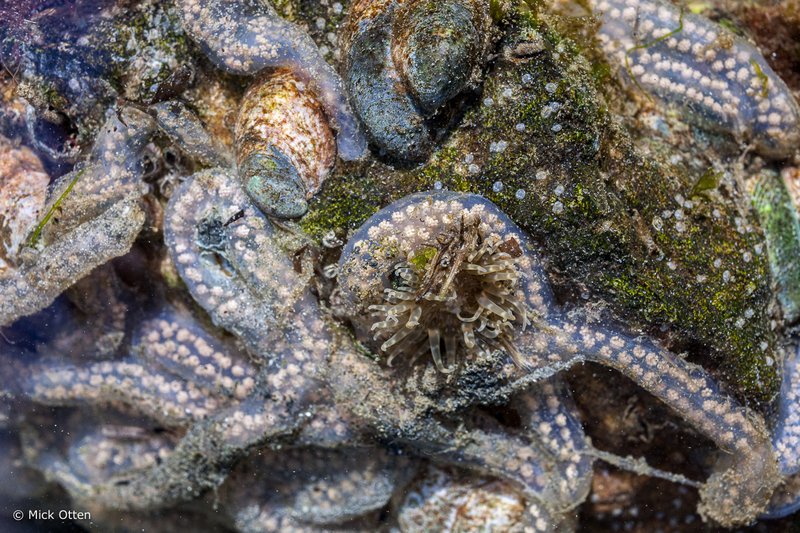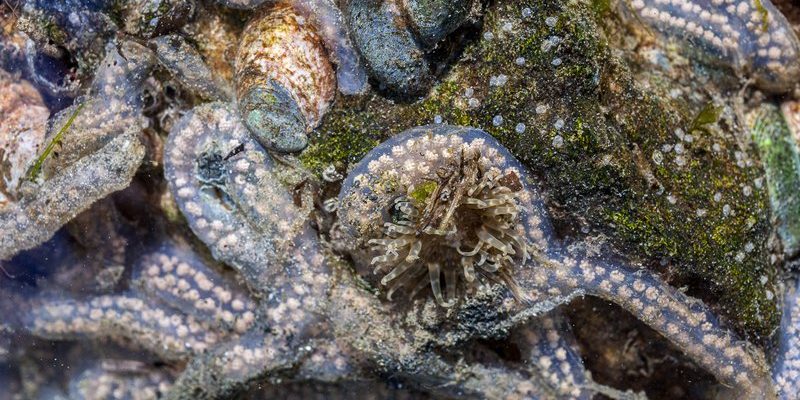
Bootlace worms, or *Lineus longissimus*, are a type of marine ribbon worm. These elongated, squishy beings are found wriggling through tidal pools and muddy seafloors. But how do they reproduce? It turns out that their methods are as fascinating as they are unconventional. You might be wondering: what does mating look like for a creature that resembles a long, colorful spaghetti noodle? Grab your favorite drink, and let’s explore the remarkable ways bootlace worms ensure their species continues to thrive.
Unraveling the Bootlace Worm’s Life Cycle
The life cycle of a bootlace worm is a multi-stage journey, beginning at the reproductive phase. After mating, the female bootlace worm lays a series of eggs that will develop into new worms. Interestingly, the process begins with the creation of gametes—those are the reproductive cells needed for fertilization. In bootlace worms, both males and females produce these gametes, which can lead to some fascinating mating rituals.
During mating, the bootlace worm engages in a process called **cross-fertilization**. This means that two worms can exchange genetic material, allowing for greater genetic diversity in their offspring. This symbiotic approach increases the chances of survival for the new worms, especially in a dynamic and often challenging environment like the ocean.
After fertilization, the eggs are laid in the surrounding sediment. Here’s where it gets even more interesting: bootlace worms can lay hundreds, if not thousands, of eggs at a time! These eggs are often protected in a jelly-like substance, which helps safeguard them from predators and environmental fluctuations.
Egg Laying Patterns: A Closer Look
When bootlace worms lay their eggs, the method can vary based on environmental conditions. Some species prefer to lay their eggs in sheltered areas, while others may choose more exposed locations. Think of it like finding the perfect spot for a picnic—some prefer a cozy nook, while others are fine with a sunny patch in the park.
The jelly-like substance that surrounds the eggs not only provides protection but also helps the embryos get the oxygen they need as they develop. Over time, these tiny embryos grow and eventually hatch into juvenile bootlace worms. The timing of hatching often coincides with the right environmental conditions, which is crucial for their survival.
If you’re picturing a mass of tiny, squiggly worms hatching simultaneously, you’re not too far off! These hatchlings are often microscopic, making them less vulnerable to predators at this young stage. Their early life is spent feeding on tiny organisms, gradually growing until they resemble the elongated adults we think of when we hear “bootlace worm.”
The Role of Environmental Factors in Reproduction
You might be curious about how the environment affects bootlace worm reproduction. Just like with people, certain environmental cues can trigger mating behaviors. For bootlace worms, factors like water temperature, salinity, and food availability play significant roles.
For instance, during warmer months, when food is more abundant, bootlace worms are likely to reproduce more frequently. This seasonal rhythm ensures that hatchlings have the best chance for survival when conditions are most favorable. It’s nature’s way of making sure that these worms can continue their lineage in the ever-changing sea.
Moreover, some bootlace worms can change their reproductive strategies based on environmental stress—like if their habitat is threatened. If conditions deteriorate, they might delay reproduction to prioritize their own survival. This adaptability is a testament to their resilience and ability to thrive in diverse circumstances.
Understanding Bootlace Worm Mating Rituals
The mating rituals of bootlace worms can be quite theatrical! During the breeding season, you might see them twisting and intertwining, almost like a dance. This behavior is not just for show; it helps ensure that both worms can exchange gametes effectively.
Here’s the thing: while bootlace worms are generally solitary creatures, they can recognize when it’s time to mate. They release certain chemical signals into the water that help them find suitable partners. This pheromone-like communication is essential for successful reproduction, especially since they can be quite spread out across their habitats.
Once the mating dance is complete, and the gametes have been exchanged, the next phase begins—laying eggs. As mentioned, this is typically done in a protective jelly. This careful layering process allows them to maximize the chances of survival for their future generations.
Challenges in Bootlace Worm Reproduction
While nature has equipped bootlace worms with fascinating reproductive strategies, they still face numerous challenges. Environmental changes—like pollution, rising ocean temperatures, and habitat destruction—can significantly impact their reproductive success.
For instance, increased temperatures can affect the timing of mating and egg-laying. If bootlace worms don’t align their reproductive cycles with optimal conditions, their hatchlings may struggle to survive. Similarly, pollution can harm their habitat, making it harder for them to find suitable locations for egg laying.
Moreover, their jelly-like egg protection is not foolproof. Predators can still pose a significant threat during the hatching phase. If the eggs are too exposed, or if environmental conditions shift unexpectedly, it could lead to less successful hatches. These challenges underscore the importance of preserving marine ecosystems.
Why Bootlace Worm Reproduction Matters
Understanding bootlace worm reproduction isn’t just for the curious mind; it’s vital for marine biology and ecology. Each species plays a role in maintaining the health of their ecosystems, and bootlace worms are no exception. Their reproductive patterns help ensure a stable population, which in turn supports the food web in their environment.
Moreover, by studying these worms, scientists gain insights into broader biological processes, such as regeneration and resilience. Bootlace worms have unique abilities to regenerate lost body parts, and studying their reproductive habits can reveal important aspects of their biology and adaptability.
Lastly, public awareness of these creatures can promote marine conservation efforts. By sharing their fascinating reproduction and life cycles, we can encourage more people to care about the oceans and the species that inhabit them.
In conclusion, bootlace worms may not get the spotlight in popular culture, but their reproductive strategies and egg-laying patterns offer a glimpse into the wonders of marine life. From their elaborate mating rituals to their challenges in reproduction, these worms remind us of the complexities of nature and the importance of protecting our oceans. So, the next time you think about marine creatures, remember the incredible journey of the bootlace worm!

